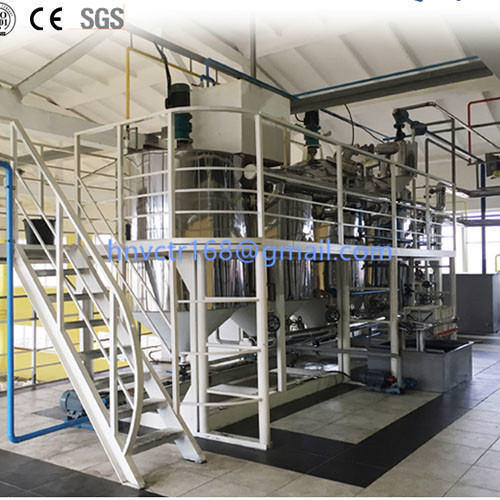General procedure of oil refining

The general principle of oil refining program arrangement is from easy to difficult, from shallow to deep, that is, remove the easy to remove first, and then remove the difficult to remove; Firstly remove those that have an adverse effect on the operation of other processes, and then remove those that have no effect on other processes, according to this principle.The complete refining procedure is as follows:
Crude oil-degumming-deacidification-bleaching-deodorization-dewaxing-advanced refined oil
When different quality crude oils are used to produce different grades of refined oil, the combination of refining sections is different and needs to be determined according to specific conditions. The following is a brief description of the refining procedures for several grades of refined oil in the national standards.
Extracted fourth-grade refined oil
Generally, crude oil with low acid value and light color is used for production. By comparing with the quality index of refined oil, it can be seen that the impurities that need to be removed are mainly colloidal impurities, water and residual solvents, and the removal of water can be combined in the desolvation operation,Therefore, the refining procedure adopted is as follows:
Extracted crude oil--degumming--desolventizing-extracted fourth-grade refined oil
Extracted third-grade refined oil
By comparing the quality indicators of crude oil and extracted third-grade refined oil, it can be seen that the impurity components that need to be removed to produce extracted third-grade refined oil mainly include impurities, free fatty acids, moisture and residual solvents. Because the free fatty acid is removed by the alkali refining method, this method has the process effects of degumming, bleaching and detoxification at the same time as the deacidification. In order to reduce the operation links, generally no separate degumming is used in the production. The refining procedures usually used are as follows:
Extracted crude oil-degumming-desolventizing-extracted third-grade refined oil
Extracted second-grade refined oil and Extracted first-grade refined oil
The extracted second-grade refined oil and extracted first-grade refined oil need to go through a relatively complete refining process, which is used to be called "full refining". The general procedure is as follows:
Extracted crude oil-degumming-deacidification-bleaching-deodorization-dewaxing-extracted advanced refined oil
The refining procedures for extracted second-grade refined oil and extracted first-grade refined oil are basically the same, except that the depth of refining is different, and most fats and oils do not need to be dewaxed, only crude oil with high wax content needs to be dewaxed.
Pressed second-grade refined oil and pressed first-grade refined oil
Pressed second-grade refined oil and pressed first-grade refined oil are mainly peanut oil, and the refining process is usually the same, except that the production of pressed second-grade refined oil raw material has an acid value of less than 2.5 and light color crude oil, while the production of pressed first-grade refined oil is Using pressed crude oil with an acid value of less than 1, light color as raw material, the refining procedure is usually as follows:
Pressed second-grade refined oil and pressed first-grade refined oil
Pressed second-grade refined oil and pressed first-grade refined oil are mainly peanut oil, and the refining process is usually the same, except that the production of pressed second-grade refined oil raw material has an acid value of less than 2.5 and light color crude oil, while the production of pressed first-grade refined oil is Using pressed crude oil with an acid value of less than 1, light color as raw material, the refining procedure is usually as follows:
Pressed crude oil-degumming-detoxification-pressed refined oil
Hot tags:Procedure of oil refining,Crude oil,degumming,deacidification,bleaching,deodorization,dewaxing,advanced refined oil














